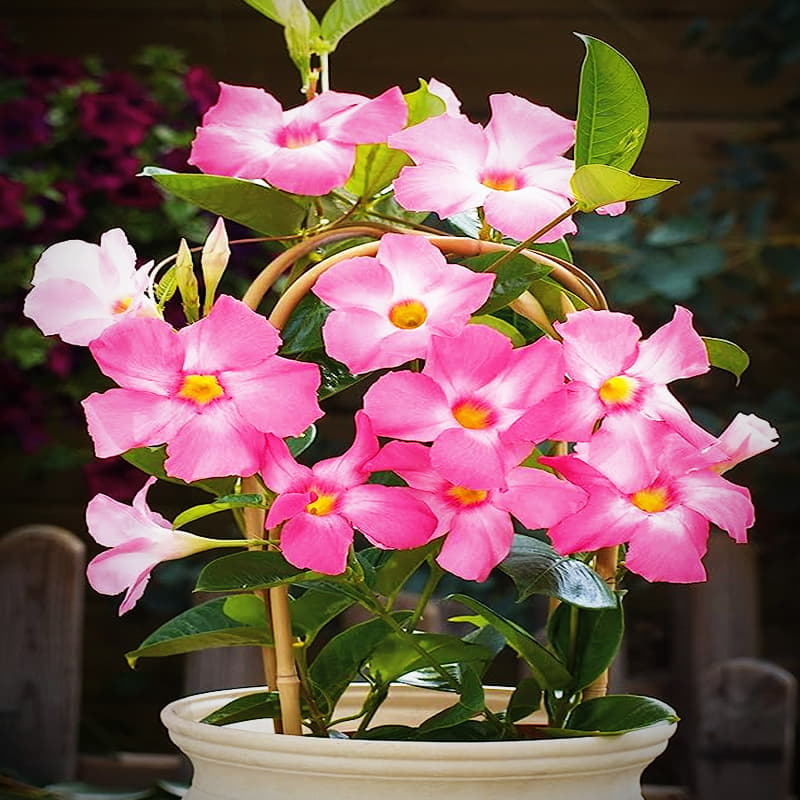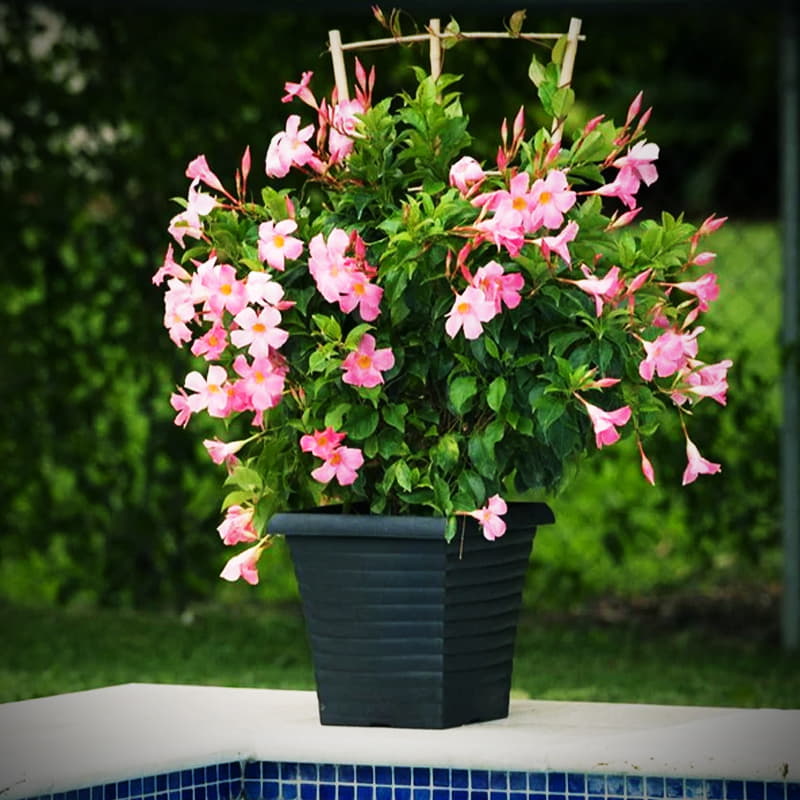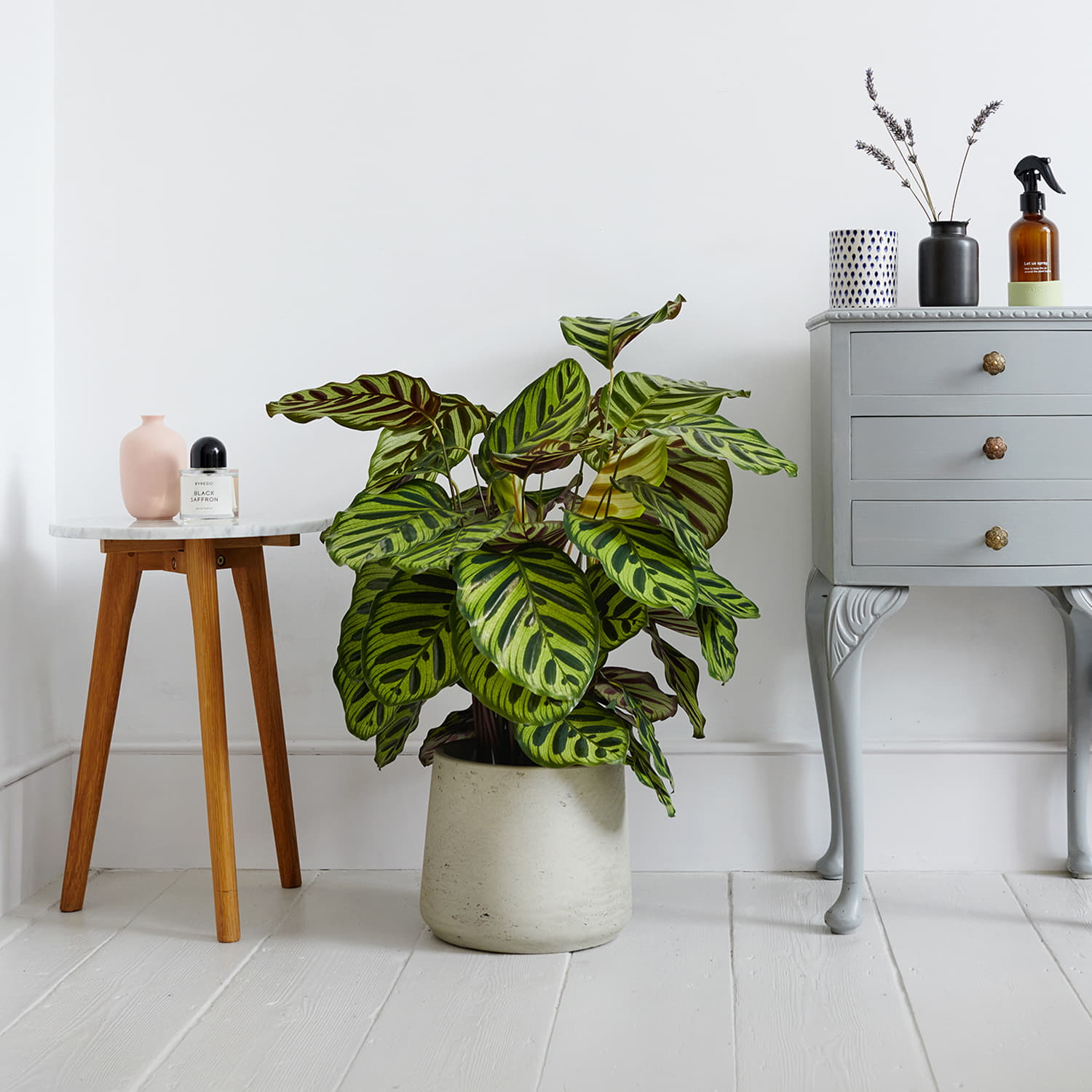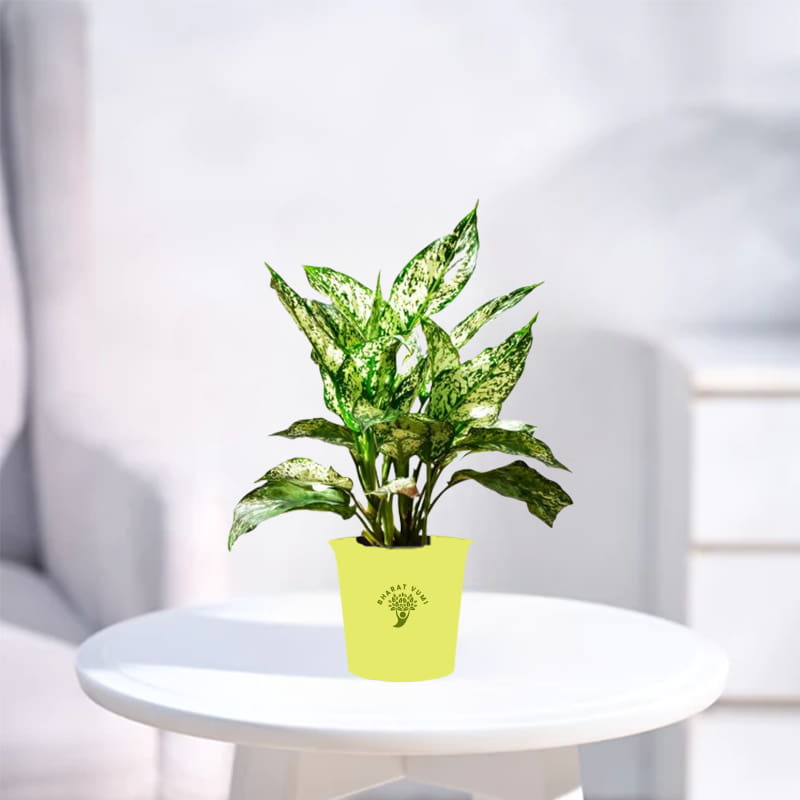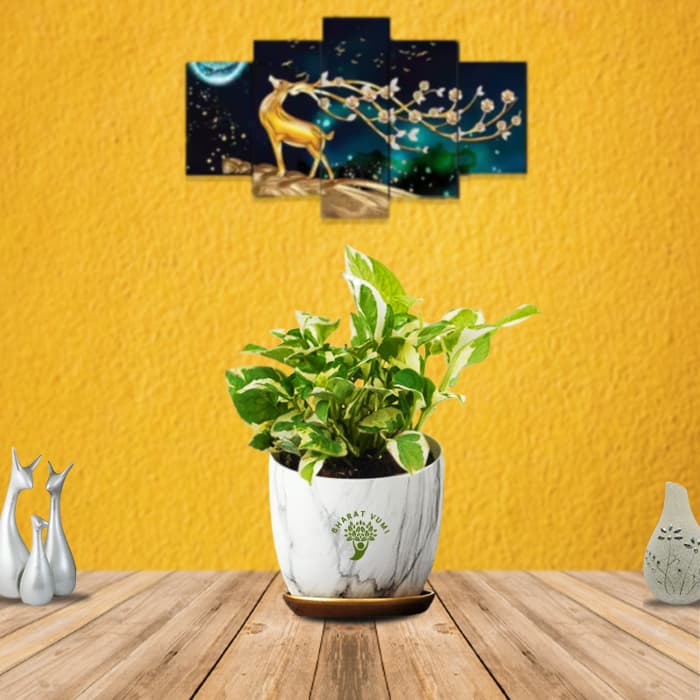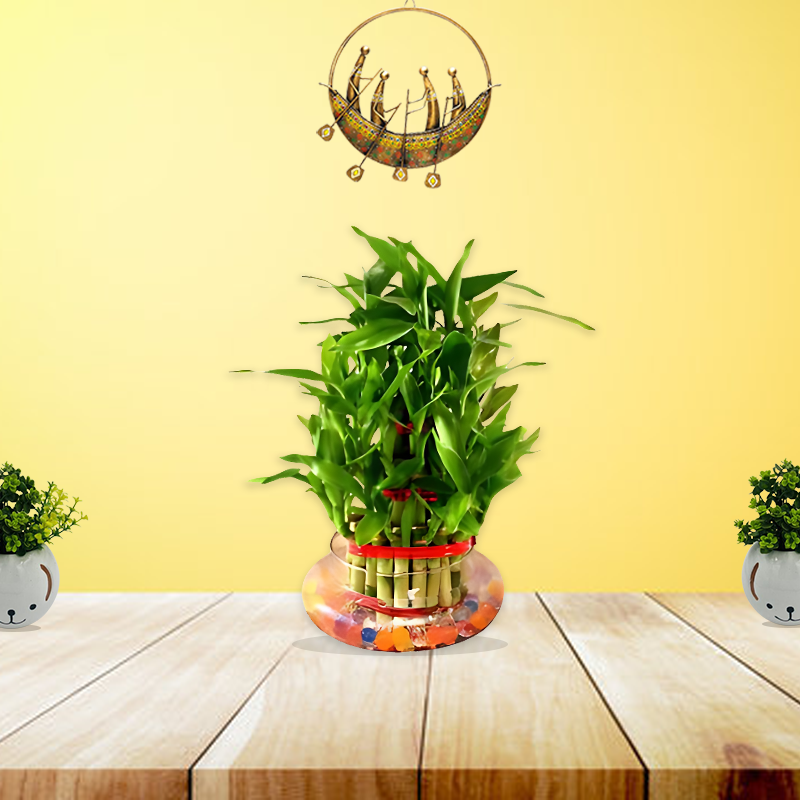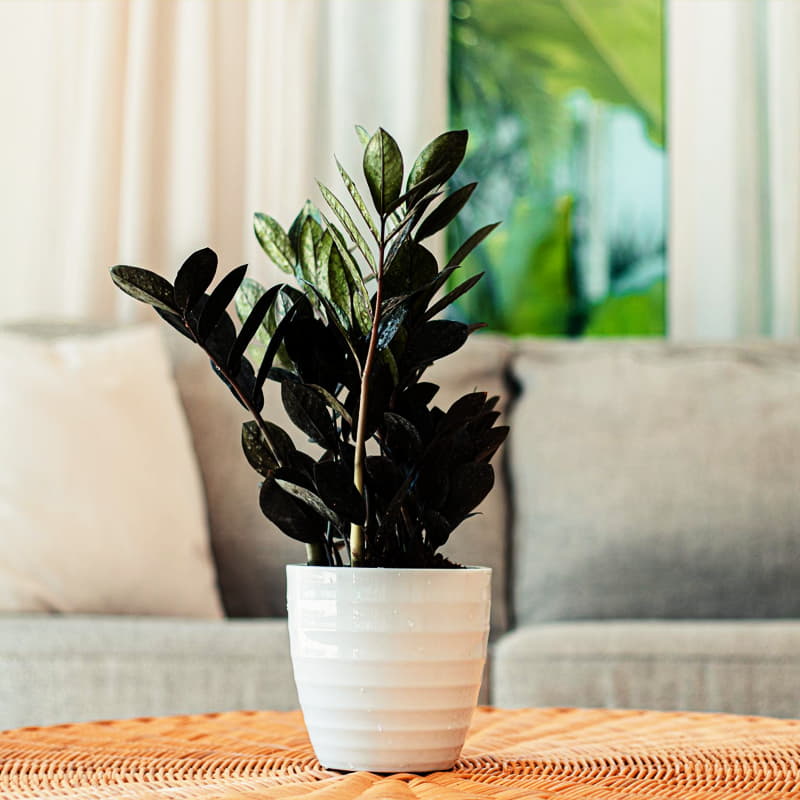Image(s) are for reference. Actual product might vary in some aspects like shape, size etc, from the one given in the image(s). However, we ensure what you get is close to the image(s) and of high quality. Our target is to deliver a healthy and well built plant. So relax after ordering and wait for an excellent delivery from Bharat Vumi that will bring smile on your face.
Plant Description:
Common Name- Mandevillia/ Rock trumpet
Scientific Name- Mandevilla x amabilis
Family- Apocynaceae
Origin- Central and South America
Mandevilla is a genus of tropical flowering vines known for
their showy, trumpet-shaped flowers and glossy foliage. These climbing plants
are popular as outdoor ornamentals, adding a splash of vibrant color to gardens
and trellises. With proper care, Mandevilla plants can thrive in warm climates,
providing an abundance of stunning blooms throughout the growing season.
Growing Conditions-
1.Soil- The plant prefers well-drained soil that is rich in
organic matter. A mixture of loam, peat moss, and compost works well. The soil
pH should be slightly acidic to neutral.
2.Watering- Mandevilla plants like consistently moist
soil. Water them deeply when the top inch of soil feels dry. Avoid
overwatering, as it can lead to root rot. During cooler months, reduce watering
frequency.
3.Temperature-Mandevilla thrives in warm and tropical
climates. It is typically grown as an annual in cooler regions or as a
perennial in frost-free areas. Ideally, temperatures should range between15°C-
32°C.
4.Humidity- Mandevilla plants prefer moderate to high
humidity levels, ideally around 50% to 60%.
5. Light Requirements-These plants require plenty of
sunlight to grow and bloom. They prefer full sun or partial shade with at least
4 to 6 hours of direct sunlight each day.
6.Fertilization- Regular fertilization helps promote healthy
growth and abundant flowering. Use a balanced, water-soluble fertilizer with a
ratio of 20-20-20 or similar. Apply the fertilizer every two weeks during the
growing season.
7. Flowering- Mandevilla plants typically produce flowers
during the warm months, such as spring and summer. During the flowering season ,
avoid high-nitrogenous fertilizers and instead use a balanced fertilizer with a
higher phosphorus and potassium content to promote healthy flower production.
8.Important Diseases- Common diseases of Mandevilla include
powdery mildew (treat with copper based fungicides and improve airflow) and
root rot (prevent by ensuring well-drained soil and proper watering practices).
9.Important Pests- Common pests of Mandevilla include
aphids, mealybugs, spider mites, and whiteflies. Control them with insecticidal
soap, neem oil, or natural predators like ladybugs and lacewings.
10. Pruning- Pruning is essential for maintaining a compact
and bushy plant. It is usually done in early spring before new
growth starts. Trim back any dead or damaged stems and remove excessive growth
to maintain the desired shape.
11. Propagation- This plant can be propagated through stem
cuttings taken in spring or early summer, by using a rooting hormone and placing them in a
well-drained potting mix.
12.Important facts- Mandevilla is a vine that benefits from support
structures like trellises, fences, or stakes. Provide a sturdy support for the
plant to climb and attach itself.
| Type |
Perennial flowering vine |
|---|---|
| Benefits/Uses |
Used as a ornamental plant. |
| Planting time |
Mid to late spring |
| Soil |
Well drained soil rich in organic matter. |
| Watering |
Provide water when the top inch of soil is dry. |
| Temperature |
15°C- 32°C. |
| Humidity |
50%- 60% |
| Light Requirements |
Full sun to partial shade, 4-6 hours of light is required. |
| Fertilization |
Apply balanced water soluble fertilizer once in every 2 weeks during growing season. |
| Flowering |
Produce trumpet shaped flowers during spring and summer. |
| Important Diseases |
Powdery mildew and root rot. |
| Important Pests |
Aphids, mealybugs, spider mites, and whiteflies. |
| Pruning |
Pruning is done to get compact and bushy growth. |
| Dormancy period |
Winter |
| Propagation |
Stem cuttings |

